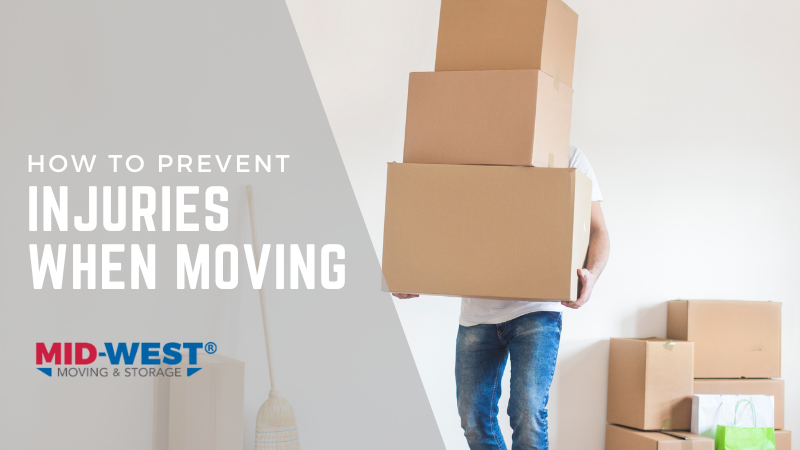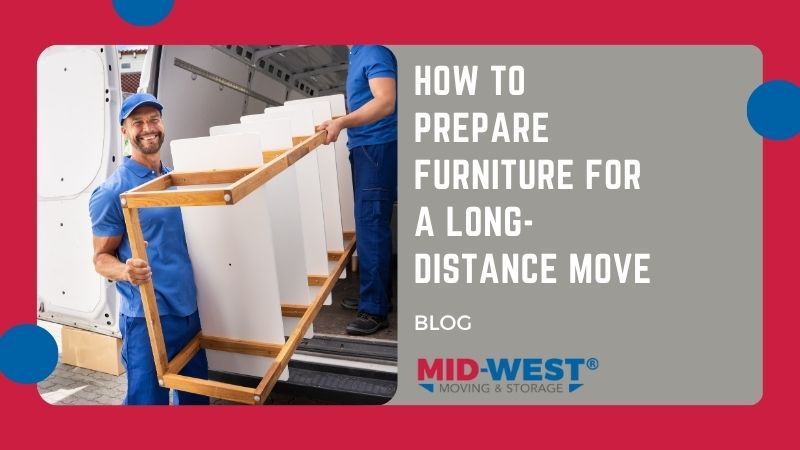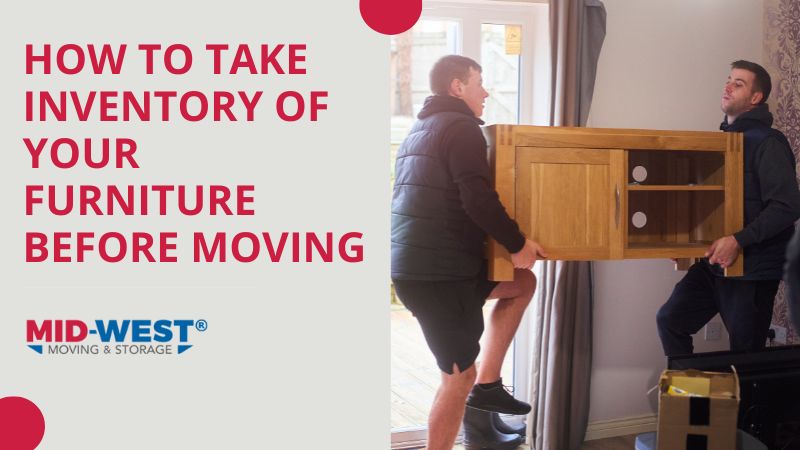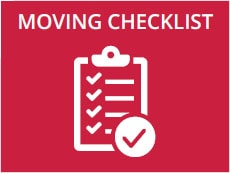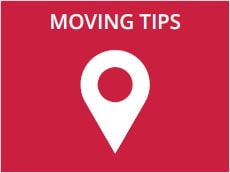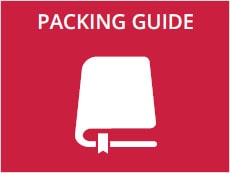Last Updated on December 26, 2024 by Kari-Ann Ryan
Heavy boxes teetering perilously, sharp scissors laying around, and flat cardboard upon which homeowners can slip are common moving hazards. Without taking precautions, individuals on the move risk injury. Here’s 13 effective ways to prevent getting hurt when packing for a relocation.
Homeowners wielding scissors as they rush from room to room, packing and taping boxes, can do substantial danger to themselves or others. When boxes are stacked high, they can tumble and lead to injury. Plus, slipping on packing paper can cause a twisted ankle or tumble.
From back injuries to twisted joints and cuts and bruises, preparing for a move can be a hazardous feat. Fortunately, homeowners who take precautions can prevent common injuries during the frenzy of the move. The following are tips to reach the intended destination without a trip to the medical clinic first.
1. Plan Ahead
Accidents are likely when homeowners rush to pack. With less focus on the task at hand and more attention on getting the boxes packed, they are prone to injury. Rather than succumb to stress, stay alert by planning the packing process as soon as the home is listed.
2. Fuel Up
A weak body is less efficient than a strong one, especially since packing is a labor-intensive task. Prepare for the move by eating nutritiously and fueling up on the vitamins and nutrients that deliver much-needed energy and stamina. Protein-rich foods, like eggs and fruits, are excellent choices.
3. Exercise
Strengthen the core in preparation for the heavy lifting required on moving day. Perform sit-ups and planks in the weeks before the move date. Engage in weight lifting to improve muscle strength in the back and abdomen. Stretch, too, to stay limber enough for the physically demanding day.
4. Pack Light
Carrying heavy boxes leads to greater potential for injury than lifting lightweight boxes. Consider packing no more than 40 pounds into a single box, many of which have weight limits. Those with knee or back injuries should drop this amount to 30 pounds.
5. Pack Carefully
While packing boxes lightly is advised to prevent back strain upon lifting, it is also advisable to pack sharp and pointed objects carefully. Whether artwork or defensive gear, sharp objects must be wrapped in bubble wrap to prevent cuts and other forms of accidental injury.
6. Use Proper Lifting Techniques
A herniated disc is the last thing a homeowner needs on the already stressful moving day. Prevent injuries like this by applying proper lifting techniques. Use the legs and keep the spine straight when lifting heavy items; the stronger muscles do the lifting.

7. Use the Right Equipment
Utilize furniture, stair, and appliance dollies to reduce the burdensome weight load of heavy boxes, appliances and furniture. Other equipment useful when moving include furniture sliders, rolling carts and moving straps. Injuries are avoided when using equipment properly; so, learn how to use them.
8. Dress for the Move
Wearing the right apparel and shoes is crucial to avoiding injuries on moving day. Open-toed shoes leave a homeowner’s toes vulnerable to being smashed if items fall on their feet. Avoid scratches and cuts by donning gloves, long-sleeved shirts, and pants. Work boots offer the ankles extra support.
9. Consider Existing Injuries
Prevent existing injuries from worsening or flaring up by donning additional protective gear. A back or knee brace serves as further protection for individuals with back issues or previously injured knees. Speak with a doctor prior to moving to determine what physical activities to avoid.
10. Declutter
In the midst of moving, clutter is a common issue—one that can lead to severe injury. Clear walking paths of boxes and moving supplies when transporting boxes. Large boxes make it difficult to see objects on the route, which can lead to a tumble and injury.
11. Take a Break
The body is constantly communicating. Individuals who feel pain when lifting are urged to stop rather than continue pushing themselves. Pain and exhaustion are signals that the body needs a rest. Especially when objects are excessively heavy, enlist a friend to help or take a breather.
12. Be Aware of Limits
Stamina is required when moving house. But strength and stamina have limits. Avoid injuries by not overestimating physical abilities. Moving certain items, like a 500-pound pool table, may be beyond an individual’s capabilities. Ask for help when moving awkward or bulky objects
13. Seek Help
Loading belongings from an average house typically takes 2 to 4 professional movers. But most do-it-yourselfers aren’t professionals—and the wrong move can lead to a twisted ankle, back strain, or worse. Ask for help, whether that involves friends and family or a moving company.
Moving house is a physically demanding endeavor. Leave the packing and loading to a professional mover, like Mid-West Moving & Storage. We take care of all phases of the move, from creating a detailed plan with furniture layout to packing, transporting, and unloading your items.
Our moving crews are licensed, bonded, and background checked, so homeowners can rest easy knowing their possessions remain secure throughout the relocation process. Plus, our movers wrap furniture in padding and stretch wrapping to protect them from the origin to the destination.
We offer our valued customers numerous conveniences to make moving day as hassle-free as possible. Short- and long-term storage facilities are available. Our moving crews can also unpack your belongings at your new home—hiring us to unpack to us is another way to avoid injury.
Whether you are moving to and from a family home, condo, apartment or dorm, our quality residential moving service can accommodate your needs. Our friendly move counselors keep customers in the loop throughout the move process, providing regular updates and being available for questions.
Delegate the heavy lifting to the pros at Mid-West Moving & Storage and prevent not only injury but stress and overwhelm. We are dedicated to serving Chicagoland with pride and professionalism. Call our Elk Grove Village, Illinois and Chicago, IL office at 847.593.7201 to experience an efficient, budget-friendly move.

